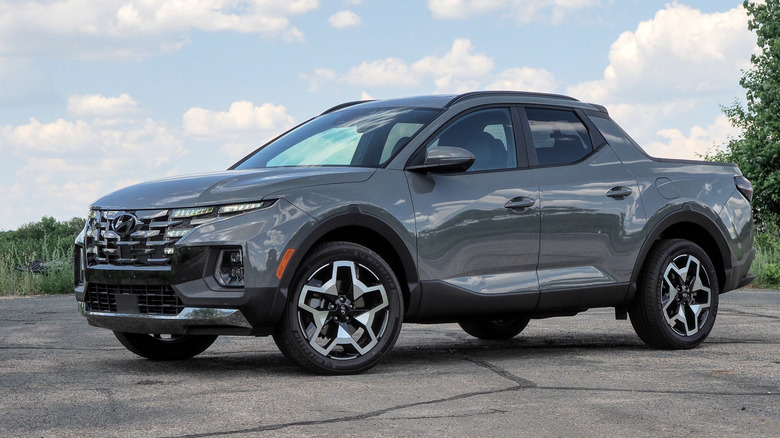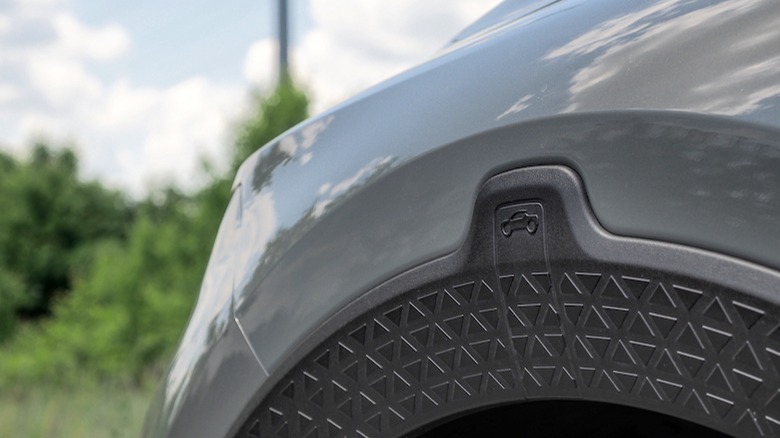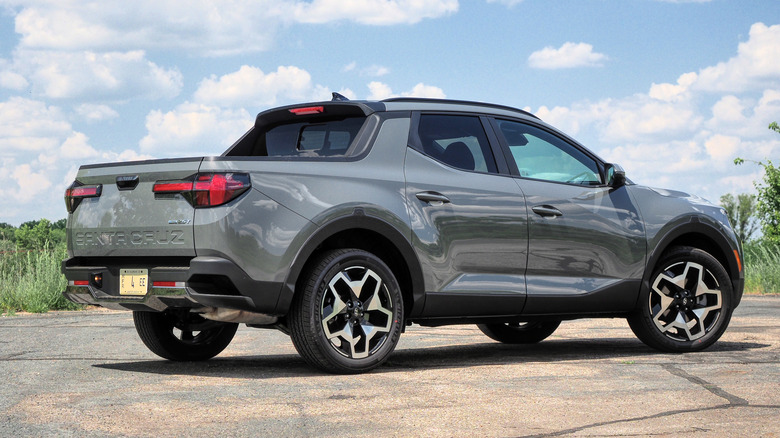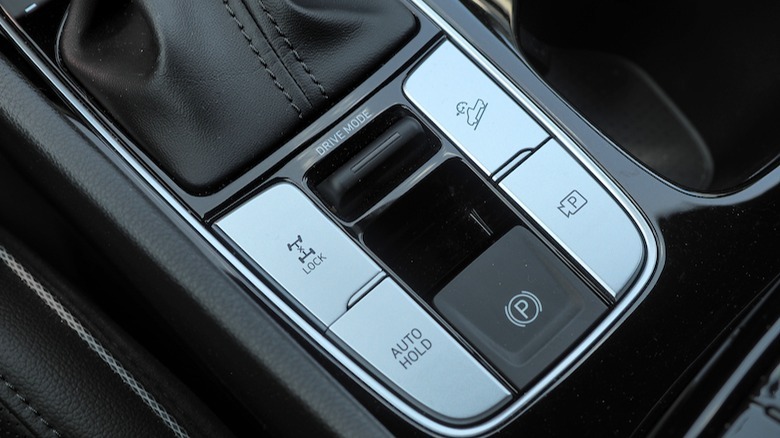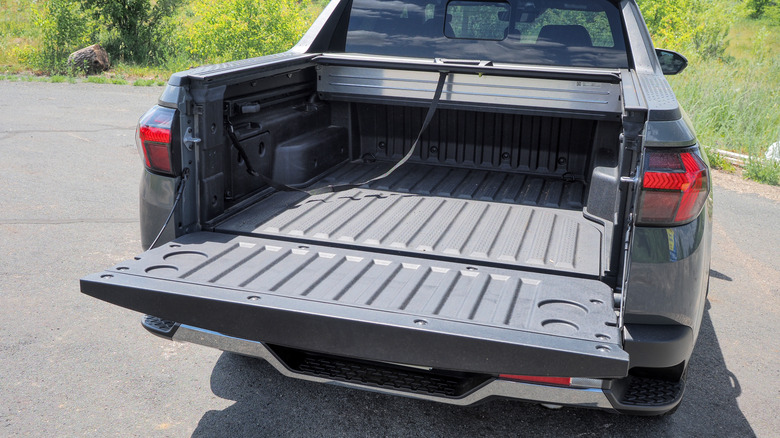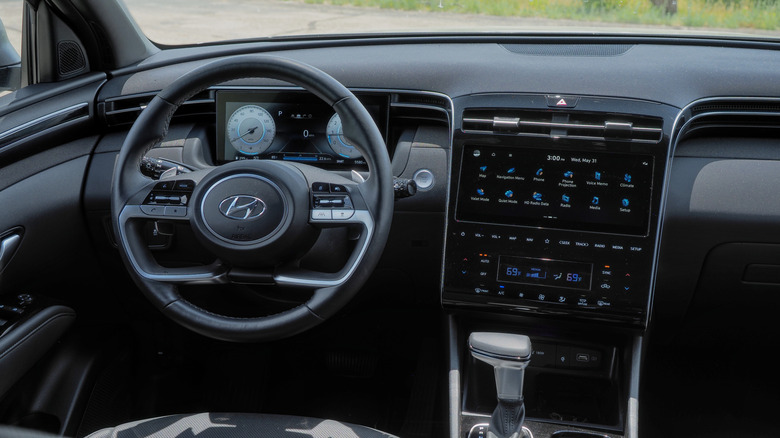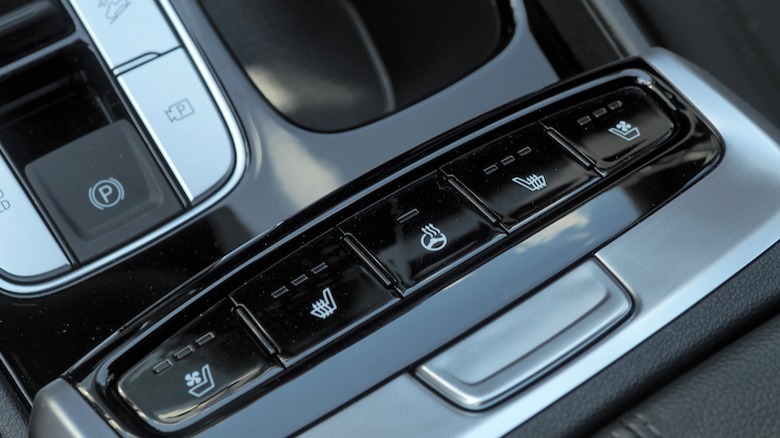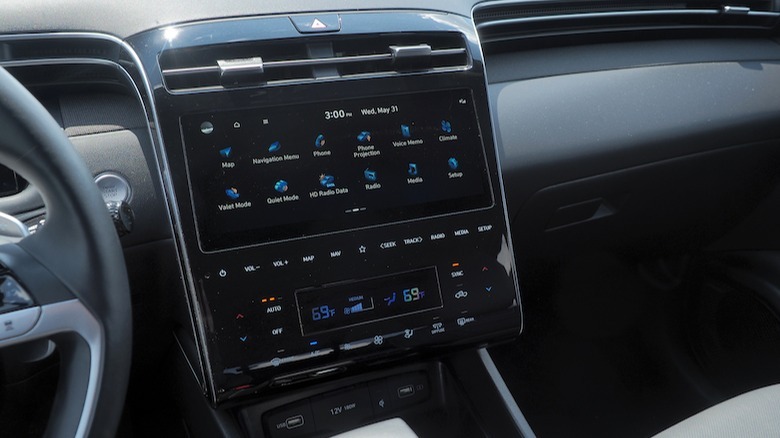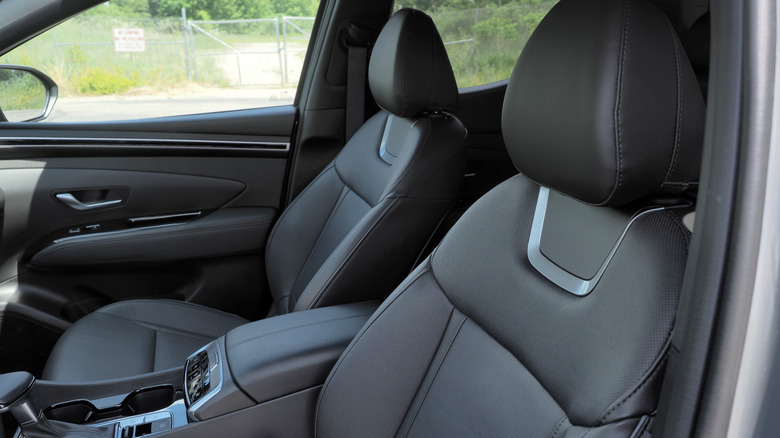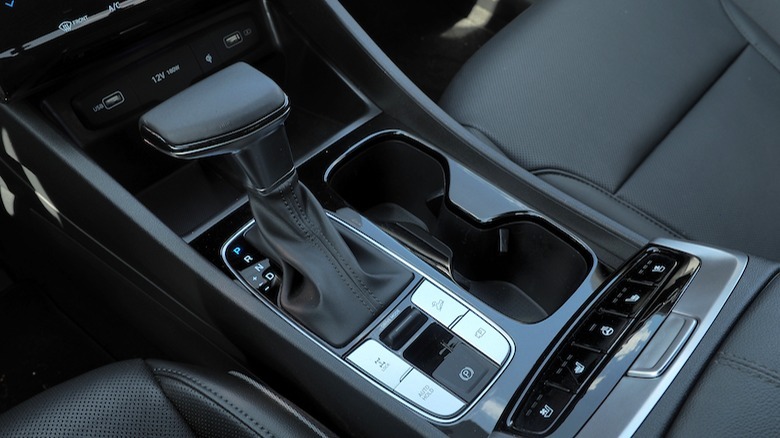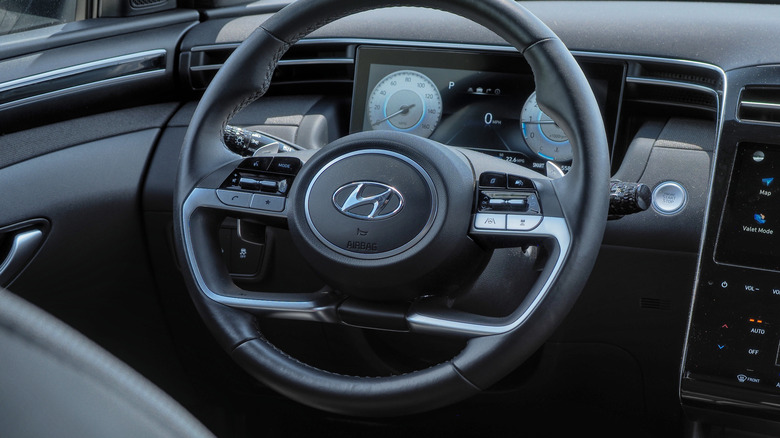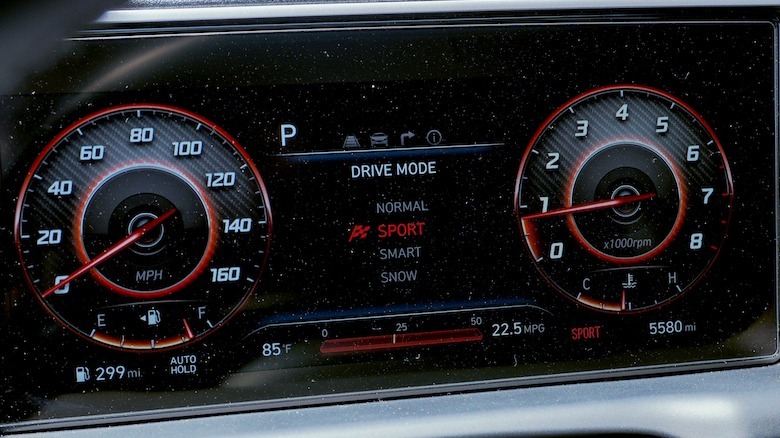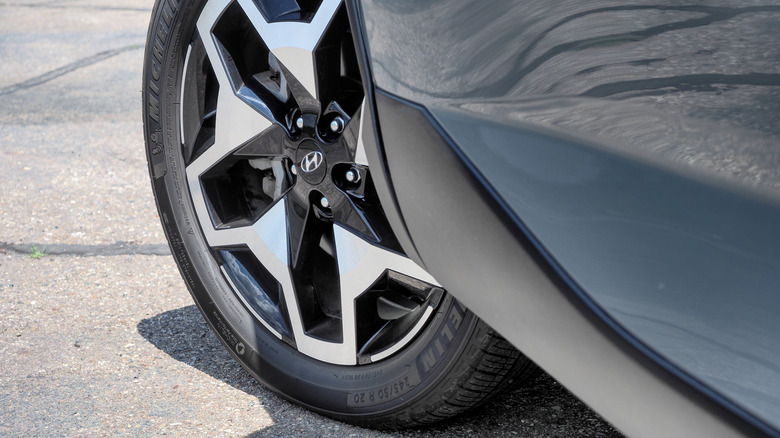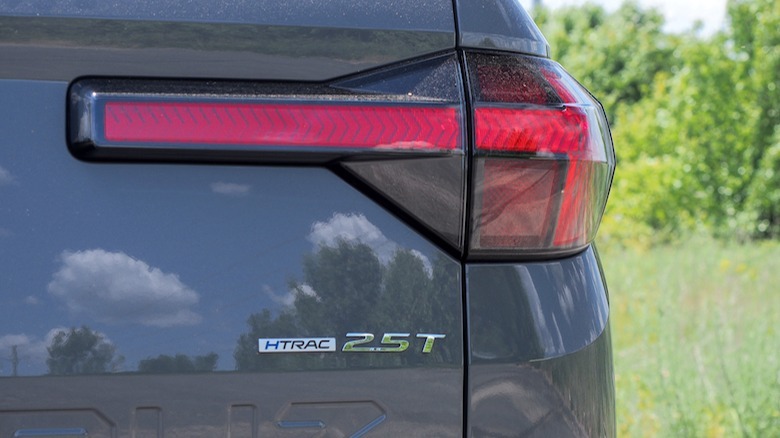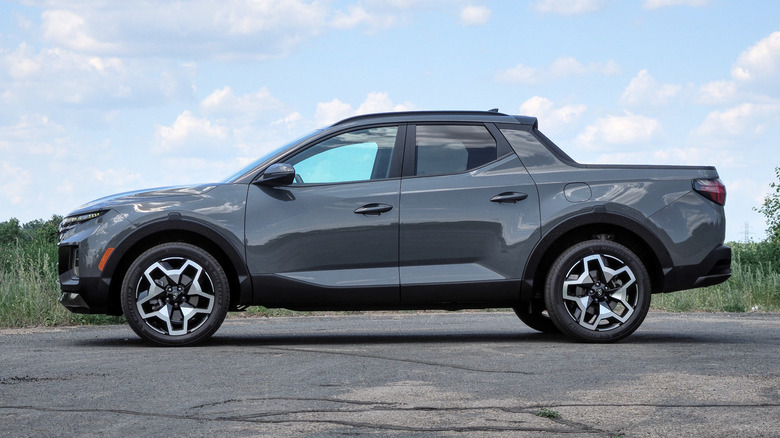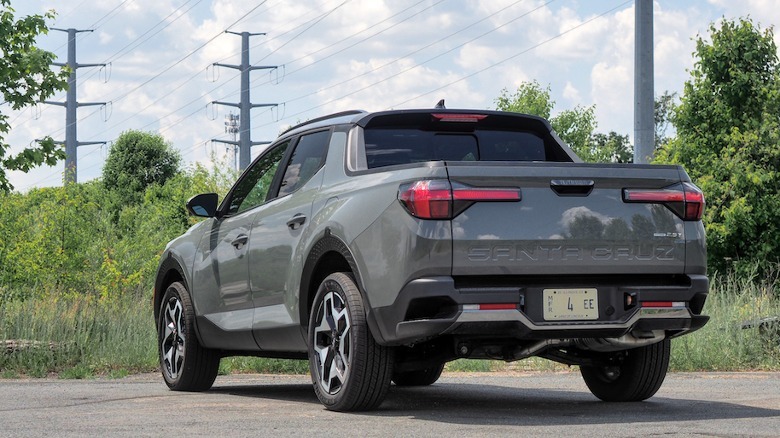2023 Hyundai Santa Cruz Review: Picking The Right Size Pickup
- Stylish design
- Easy and SUV-like to drive
- The right amount of pickup capacity for a lot of people
- No electrified option
- Infotainment is fiddly on higher trims
- Could be more frugal
Size may not be everything, but it's hard to square rationality like that with America's lingering taste for bigger, angrier-looking pickup trucks. There's no denying the appeal of a flexible vehicle, a workhorse as undaunted by a Home Depot run as it is at dropping the kids off at school. All the same, judging by the number of unladen pickups on the road, a lot of the time we're paying the gas and size penalty for our occasional moments of practicality.
Viewed through that lens, smaller trucks like the 2023 Hyundai Santa Cruz feel like an obvious solution. No, it may not have the payload rating of an F-150 or Silverado, but neither does it have the thirsty V8 nor the outlandish proportions. If your primary concern is toting something outsized or messy once in a while, and living with comfort the rest of the time, Hyundai's option is compelling.
2023 Santa Cruz pricing kicks off at just $25,700 (plus $1,295 destination) for the base SE trim. At the other end of the scale, a top-tier Santa Cruz Limited like the one you see here is from $40,320.
Two engines and an SUV soul
The base Santa Cruz SE and SEL models get Hyundai's 2.5-liter inline-4 gas engine, which offers 191 horsepower and 181 lb-ft of torque. Front-wheel drive is standard, along with an 8-speed automatic transmission, and there's a towing rating of 3,500 pounds. All-wheel drive is optional, costing $1,500 to add.
The Santa Cruz Night, SEL Premium, and Limited trims, in contrast, upgrade to the 2.5-liter turbo-four. That has 281 horsepower and 311 lb-ft of torque and comes with an 8-speed wet dual-clutch transmission (DCT) and all-wheel drive as standard. The latter can be locked with a 50/50 power split with a button in the center console, and there's also a higher tow rating of 5,000 pounds.
Regardless of engine, there's MacPherson Strut front suspension, self-leveling independent multi-link rear suspension, and electric power steering. Pretty much the same, you may notice, as Hyundai's Tucson.
Not the biggest bed, but a flexible one
Where the Tucson has a traditional trunk, though, the Santa Cruz slices and dices a pickup bed for its tail. It's just over 4.3 feet in length, almost 54 inches wide (or just shy of 43 inches between the wheel wells), and has a 27 cu-ft volume. Certainly far from what you can find hanging off the back of an F-150, sure, but mighty practical nonetheless.
There's a 1,411-pound maximum load limit, and I suspect for most people that's plenty. Really, the Santa Cruz comes into its own with odd-sized or messy cargo: objects you'd have to somehow tether down a half-closed Tucson tailgate to accommodate, or soil or mulch which would be a nightmare to clean from an SUV's carpeted trunk. Hyundai offers an integrated tonneau cover — it slides across the bed like a roller shutter — as part of the $3,270 Activity Package on the SEL and standard on the Night and above.
The bed itself is sheet molded composite, with integrated sidewall compartments, D-rings for tethering things down, a rear bumper step, and remote release from the keyfob. There's also a useful lockable under-bed storage compartment. The Activity Package also includes an adjustable utility track system and 115V outlet, plus roof side rails and a sliding glass rear window; they're also standard on Night trim and above.
Familiar foibles in a familiar cabin
Inside the cabin, meanwhile, Hyundai's track record of solid standard equipment continues, though the levels aren't quite as lavish as in some of the automaker's SUVs. All trims up to SEL Premium get cloth seats; the Limited trim swaps that for leather. Heated front seats are standard from SEL up; Limited gets ventilation, too.
An 8-inch infotainment touchscreen is standard up to Night trim, with wireless Apple CarPlay and Android Auto; it's paired with a 4.2-inch driver display on SE and SEL trims, or a 10.25-inch fully-digital cluster on SEL Activity Package and up. SEL Premium gets a 10.25-inch infotainment touchscreen, wired smartphone projection, and navigation, plus the 10.25-inch gauge cluster. Limited trim throws in a Bose audio system.
Hyundai's infotainment UI is dark and sober, but easy to use. The same can't quite be said for the array of touch-sensitive buttons — for everything from volume and media control, through to HVAC adjustment — which are clustered underneath the larger of the two touchscreens. As noted before, they make developing muscle memory tricky, and honestly, I'd prefer the more traditional knobs and buttons that come on the lower trims with the smaller touchscreen.
Solid tech, but the bed feels old-school
All trims get forward collision-avoidance assistance with pedestrian detection, blind-spot collision-avoidance assistance, lane-keeping assist and lane-following assist, auto high-beams, rear cross-traffic collision-avoidance assist, rear occupant alert, and safe-exit warnings. That's a comprehensive suite, and welcome to see, though the adaptive cruise control standard on some other Hyundai models is reserved for SEL Premium trim and above.
Limited trim gets the blind-spot view monitor — which beams a live camera view of the adjacent lane to the dashboard display when you hit the turn signal — and a 360-degree camera, along with navigation-based smart cruise control that can adjust speed depending on upcoming corners. Highway Driving Assist is also standard on Limited, Hyundai's hands-on system which can help maintain pace with traffic and a centered position in the lane.
Some of the fancier tech we've seen recent pickups debut is absent. There's no multi-position tailgate, for instance, or integrated cooler, and the Santa Cruz's bed doesn't also work as a set of load scales like an F-150's can. What you do get, though, is some useful under-bench storage in the second row, and the overall scale of the Hyundai means clambering into the bed — or reaching over the sides — isn't the feat of acrobatics that larger pickups demand.
Easier to drive than most trucks
Neither does maneuvering the Santa Cruz around city streets require anything close to the caution that a full-sized truck requires. Its compact footprint and SUV underpinnings make it exceedingly car-like to drive, while Hyundai's familiar engines only underscore the dinky pickup's ease.
From prior experience, the non-turbocharged engine can get a little breathless when pushed. Far better, if you've the budget for it, to go for the 2.5-liter turbo-four. Hyundai hasn't tuned the drivetrain for quite the same urgency from a standing-start as in its recent SUVs and crossovers — the Santa Cruz feels spritely, but not quite as perky — but there's no challenge keeping pace with highway traffic, nor overtaking in it.
The 8-speed slicks between its ratios with merry ease, though you can overrule its decisions if you prefer (but you probably won't need to). A handful of drive modes — including Sport, in which things get louder and lower gears are held longer — are easily switched between via a surreptitious toggle behind the shifter.
A rare ride, but not a unique one
Hyundai quotes the turbo engine as being good for 19 mpg in the city, 27 mpg on the highway, and 22 mpg combined. That's slightly worse in city driving than the non-turbo, but slightly better on the highway. In my own, mixed driving, I saw just shy of 23 mpg.
That holds up to the Santa Cruz's most obvious competition, Ford's Maverick, at least in AWD form. The blue oval's compact pickup comes as an economical hybrid — readily capable of 40+ mpg — in base form, merrily besting Hyundai's base engine. However, you can't get the Maverick EcoBoost hybrid with all-wheel drive: for that, you'll need the turbo four-cylinder, rated at 24 mpg combined.
The Maverick feels more rugged and tough inside, though it lacks many of the creature comforts and the technology of the higher Santa Cruz trims. The Ford is also more truck-like to drive, which depending on the owner may be a good or a bad thing.
2023 Hyundai Santa Cruz Verdict
Without getting into the never-ending debate about whether most pickup owners actually need a pickup, there's a lot to like about the Santa Cruz. Feeling okay to throw building or gardening materials in the back without worrying about damaging trim, or carrying around oddly-sized or shaped items that wouldn't readily fit in an SUV, is definitely appealing. The truck's scale means less guilt when you're not actually taking advantage of all that practicality, too, though I do wish Hyundai offered a mild-hybrid or plug-in hybrid version.
What Hyundai also doesn't have is a Santa Cruz N Line or — be still, my beating heart — a Santa Cruz N. While the Night trim may look the part, with its blacked-out grille, bumper sections, side cladding, and rear trim, it's still not quite the performance pickup that the automaker could build. Given the success of Ford's Raptor series, Ram's TRX, and Chevrolet's ZR2, building a more aggressive version of the Santa Cruz feels like it would be a license to print money.
Even without turning the truck into the burly little boy of our dreams, though, the Santa Cruz feels like a good example of right-sizing. SUVs may still comfortably out-sell it — American buyers grabbed almost five times as many Tucson as they did the pickup in 2022 — but it's tough to argue with offering more choices in a segment drivers have already demonstrated they love. If your biggest complaint about SUVs is that their flexibility is too limited, Santa Cruz ownership might be the fix.
